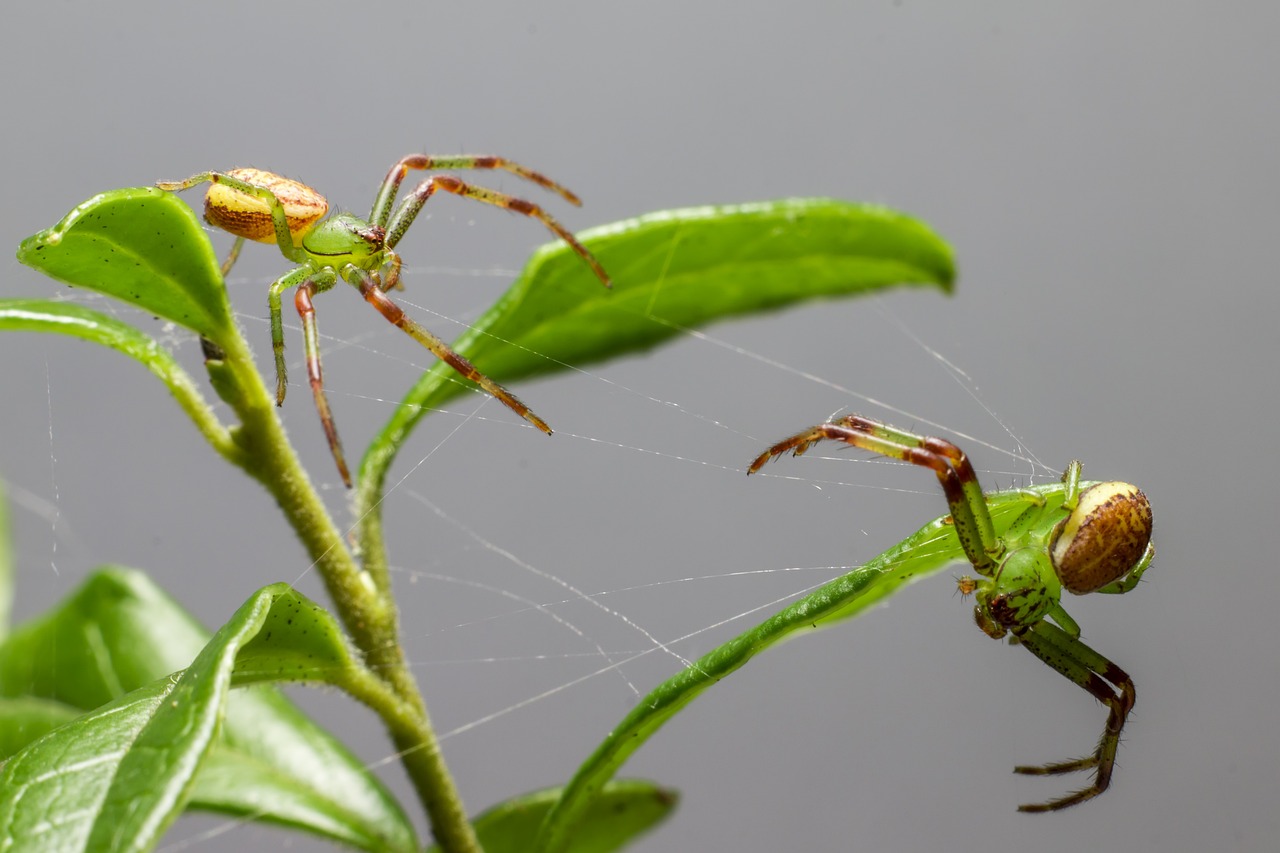The Green Crab Spider (Diaea dorsata) is a small, vibrant spider species from the family Thomisidae, commonly known as crab spiders due to their crab-like appearance and sideways movement. Here are some key details about the species:
Physical Description:
- Size: Females are larger, measuring around 5–7 mm, while males are smaller, typically about 3–4 mm in body length.
- Color: The spider has a striking green body, especially on its cephalothorax (the fused head and thorax), which provides excellent camouflage in leafy surroundings. The abdomen is usually greenish or yellowish with darker markings. Its legs are relatively short compared to other spiders and are also green or yellowish.
Habitat:
- Diaea dorsata can be found across Europe and parts of Asia. It typically resides in deciduous forests, shrubs, and low vegetation, where its green coloring allows it to blend in with leaves and other plant matter.
Behavior:
- Ambush Predator: Like other crab spiders, Diaea dorsata is an ambush predator, relying on its excellent camouflage to catch prey rather than spinning webs. It often waits on plants and flowers to grab unsuspecting insects such as flies, bees, or small beetles.
- Movement: Its crab-like sideways motion, coupled with its small size, helps it remain inconspicuous.
Reproduction:
- Females usually lay eggs in a silk sac, which they attach to vegetation. The female often guards the eggs until they hatch.
Adaptations:
- Its green coloring is its most remarkable adaptation, allowing it to remain unseen while lying in wait for its prey among leaves or flowers. This makes it a highly effective predator despite its small size.
Overall, the Green Crab Spider is a fascinating species known for its excellent camouflage and unique hunting technique.
Visited 761 times, 1 visit(s) today
Views: 1120
Subscribe to the newsletter:
